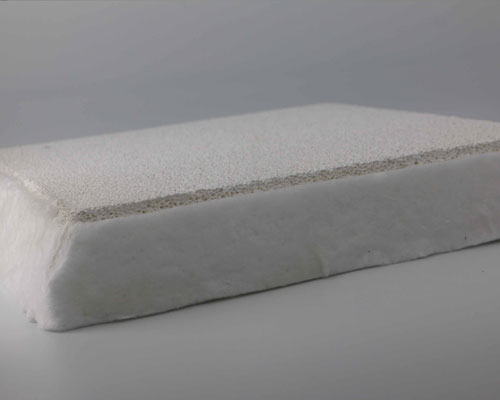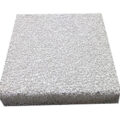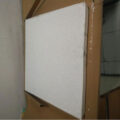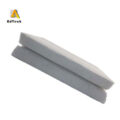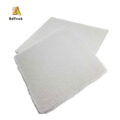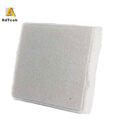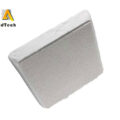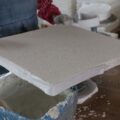The ceramic filters can effectively remove various fineness of micron inclusions in the molten aluminum, so that the aluminum liquid becomes a smooth laminar flow, which is beneficial for punching. It has a unique mullite-corundum structure, good mechanical strength and chemical stability, and excellent aluminum cleaning. Strictly control the pore size and through-hole ratio to achieve stable filtration.
The alumina foam ceramic filter produced by our company has a sealed ceramic fiber gasket around it, which can help the filter to be sealed in the filter box to ensure that there is no metal liquid bypass. Foam ceramic filter plates are mainly used in the purification process of aluminum and aluminum alloy production, and are also suitable for various gas-solid and liquid-solid separation media, catalyst carriers, burners and sound absorption and environmental protection.
How to Use Ceramic Foam Filter
- Clean the CFF filter box
- Gently put the filter plate into the filter box, and then press the gasket on the filter plate by hand to prevent the flow of aluminum liquid.
- Preheat the filter box and filter plate uniformly to make it close to the temperature of the aluminum casting solution.
- Pay attention to the replacement of the aluminum hydraulic head during casting. The normal starting pressure head is 75-150mm.
- When the molten aluminum starts to pass, the indenter will drop below 25mm. Then the pressure head will slowly increase.
- After filtering, please remove the filter plate and clean the filter box in time.
Alumina ceramic filters can effectively eliminate large impurities in molten aluminum. It can remove small inclusions of a few microns in size that cannot be achieved by conventional processes in molten aluminum. At the same time, since the fine inclusions are filtered out, the number of effective crystal nuclei in the aluminum liquid is reduced. The molten aluminum grows under relatively high supercooling conditions, which shortens the solidification time and refines the structure. The ceramic filter reduces the hydrogen content in the molten aluminum. Hydrogen atoms can be adsorbed on some oxidized inclusions, and the oxidized inclusions can become the core of bubble growth, thereby removing impurities while filtering out the inclusions. Through adsorption, it can also remove harmful elements in molten aluminum (Na K).

